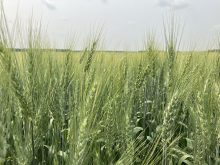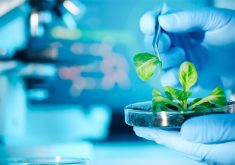Many crops rely on pollination to flourish, while many others are able to self-fertilize. For years, scientists have questioned what controls the ability of plants to avoid self-fertilization, also known as self-incompatibility (SI).
Now, scientists at the University of Birmingham in the United Kingdom have identified a gene that controls SI. They worked with the plant Arabidopsis thaliana, or thale cress, a relative of cabbage and oilseed rape.
Arabidopsis is a self-compatible plant, meaning it can self-fertilize. It is used extensively in labs for various genetic experiments and studies on how plants function, given its useful short germination time and small size. In the study, however, Arabidopsis was genetically engineered to become self-incompatible.
Read Also

Saskatchewan puts crown land auction on hold
Auctions of Saskatchewan crown lease land are once again on hold.
Self-incompatibility functions by regulating fertilization through recognition and rejection of a plant’s “self” pollen. One plant that is self-incompatible is poppy. The poppy’s own pollen is recognized and killed by the triggering of what is termed programmed cell death. It is a biologically targeted way to eliminate unwanted pollen grains.
To understand how SI works at the molecular level, Arabidopsis plants were engineered with poppy SI genes. This resulted in the team identifying a gene critical for regulating, or maintaining, self-incompatibility. But when the gene was removed, self-incompatibility ceased, and the plant could self-fertilize. The gene, named Highlander, encoded a protein called PGAP1.
“We started this research a long time ago,” said professor Noni Franklin-Tong in the School of Biosciences. “Over the years we identified and cloned the two S-determinants (genes) controlling self-incompatibility in poppy. I spent most of my career focusing on the cell biology of the system. A key finding was that it involved a cell-suicide mechanism called programmed cell death.”
In crop breeding, the ability to control self-fertilization has huge potential in the development of stronger, more resilient crops. But at the same time, self-fertilization has value in developing certain traits.
“One of the most important factors affecting the domestication of a wild plant species into a crop is self-fertilizing, as self-fertilization allows the fixation of a desired trait much more easily,” said Zongcheng Lin. “In this sense, the majority of the crops which rely on seeds for breeding are self-fertilizing.”
Lin worked with Franklin-Tong while obtaining his PhD before continuing the research at Ghent University in Belgium, looking for genes involved in the SI response.
“Many crops (the majority of the major grain crops) are self-compatible (SC), but they often have self-incompatible relatives,” said Franklin-Tong.
“The self-incompatibility trait is often used by plant breeders to generate improved hybrid varieties by outcrossing, but it’s also desirable to have self-compatible inbred lines to allow bulking up of seed by selfing. So having both traits and the ability to switch SI on or off would be very useful. The hope is that using genes controlling self-incompatibility can eventually be harnessed to make breeding hybrids easier and cheaper.”
She said that by putting the poppy genes into Arabidopsis to make it self-incompatible allowed them to use the plant as a model to investigate how self-incompatibility is controlled.
She said in the media release that it was a major breakthrough in identifying a new mechanism critical for achieving self-rejection of incompatible pollen, and for implicating a role for specific proteins called GPI-APs in the process for the first time.
The GPI-APs family of proteins play a pivotal role in other systems such as enhancing innate immunity by increasing the interactions between certain proteins. By identifying a role for these proteins in regulating self-fertilization, the team also uncovered potential evidence that this system may have evolved from other systems such as immunity from pathogens.
As the Highlander gene is part of the pathway involved in the maturation of the GPI-APs proteins and removing the gene results in breakdown of self-incompatibility, Franklin-Tong said that it shows for the first time that these proteins are required for self-incompatibility.
“This is a major finding and means that this huge area, which is currently quite a hot topic, needs to be investigated,” she said. “Which GPI-APs are involved? This won’t be easy to solve as there are over 250 GPI-APs proteins in Arabidopsis. What exactly do they do? And another big question is whether the plant immune response, which also uses GPI-APs to regulate disease responses, may have been an evolutionary starting point for some SI systems. Exploring further parallels between these two systems would be very interesting.”
While breeders will undoubtedly be interested in the research, Franklin-Tong said that it is a little early before the research findings can be useful in a practical sense. The process still needs to be tested to see if it works in a crop species.
The research was published in the journal Current Biology.















